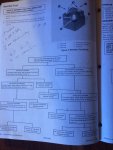I installed a new tach about a week ago. After installation i launched the boat. Tach worked fine to about 4200RPM or so, and then would go down to zero. I did some research on possible causes, checked all connections(new) and everything checked out there. This morning i did the rectifier test from the Merc service manual. They have a flow chart of testing procedures. I followed it exactly:
You disconnect all connections from rectifier. connect positive lead of multi meter to ground and negative to "A" and "C", where the stator leads connect. I had no continuity. If you get that you reverse your meter leads and try the test again(black to grd and red to "a" and "c"). Again i had no continuity. According to the chart, this indicates a faulty rectifier.
I have almost exactly the same motor on my other boat. For grins i decided to test that rectifier. the tach in that boat works and I haven't noticed any funky charging issues. I performed the test and had the exact same results.
The meter is a good, working meter with a new battery. I'm positive that there is nothing wrong with the readings. I'm about to order 2 new rectifiers, for both engines, but thought it was worth a quick post to see if anyone with experience with these motors might see something else.
I did a stator test on both motors and they tested fine.
Ideas?
You disconnect all connections from rectifier. connect positive lead of multi meter to ground and negative to "A" and "C", where the stator leads connect. I had no continuity. If you get that you reverse your meter leads and try the test again(black to grd and red to "a" and "c"). Again i had no continuity. According to the chart, this indicates a faulty rectifier.
I have almost exactly the same motor on my other boat. For grins i decided to test that rectifier. the tach in that boat works and I haven't noticed any funky charging issues. I performed the test and had the exact same results.
The meter is a good, working meter with a new battery. I'm positive that there is nothing wrong with the readings. I'm about to order 2 new rectifiers, for both engines, but thought it was worth a quick post to see if anyone with experience with these motors might see something else.
I did a stator test on both motors and they tested fine.
Ideas?




















